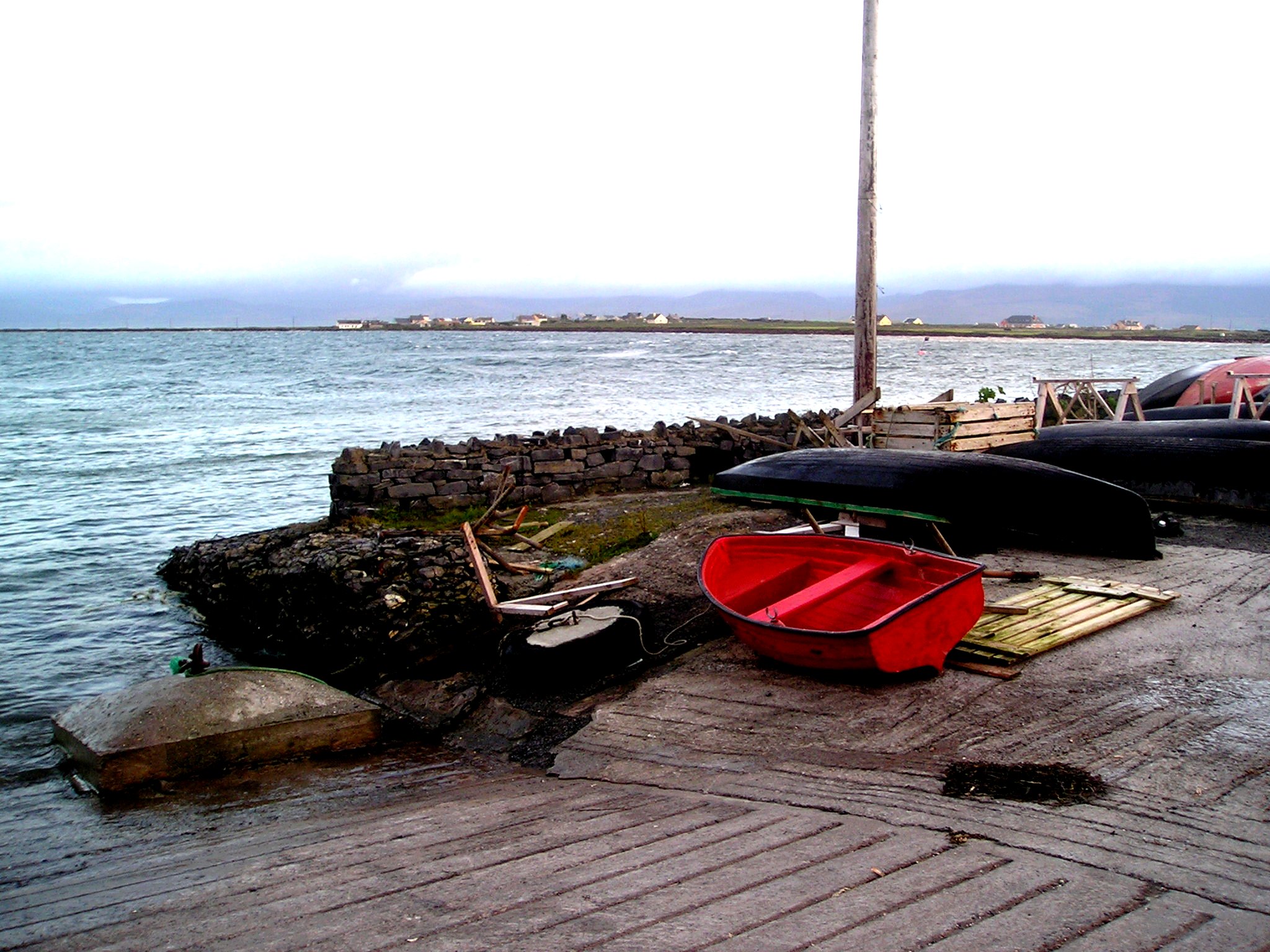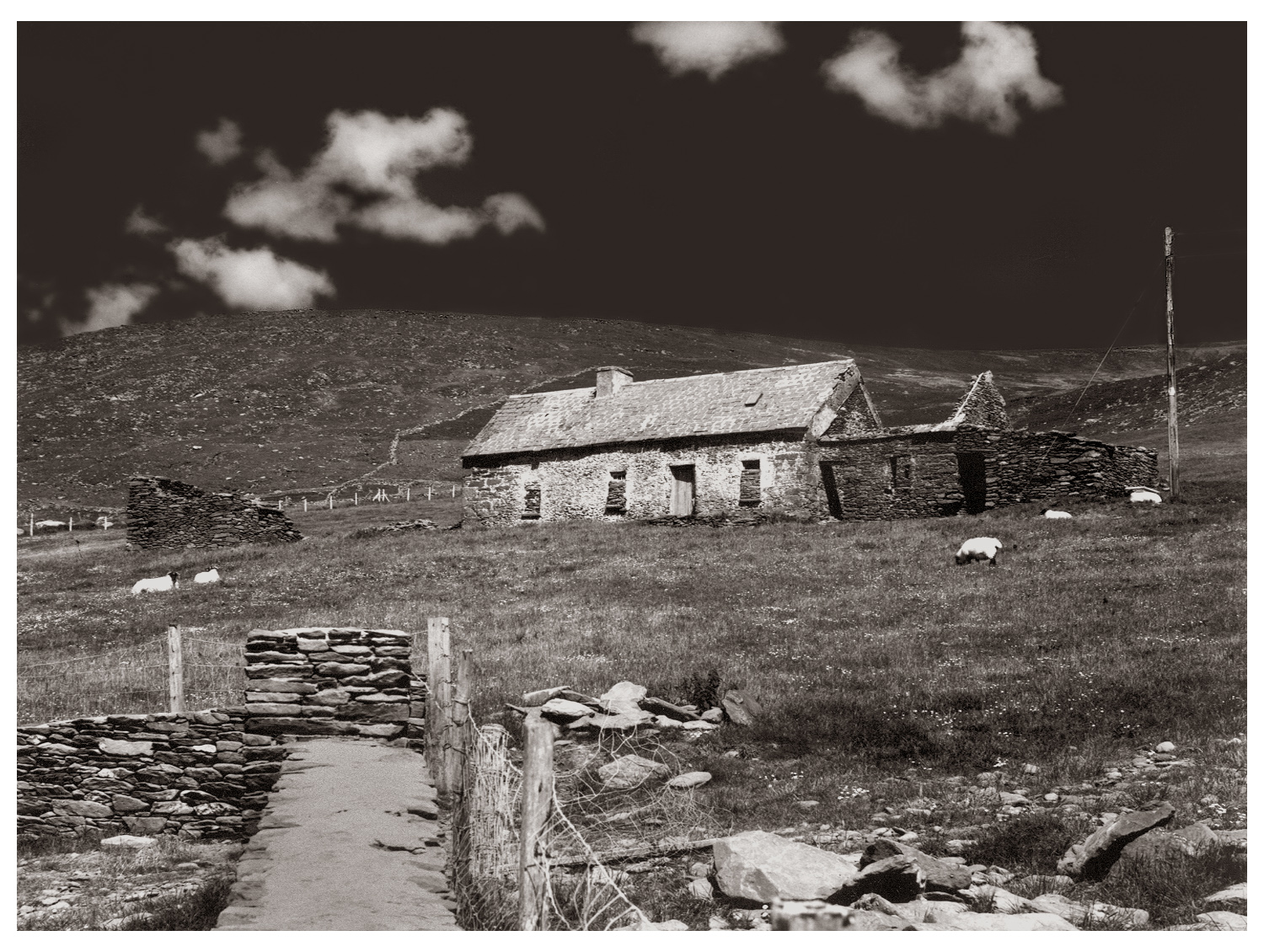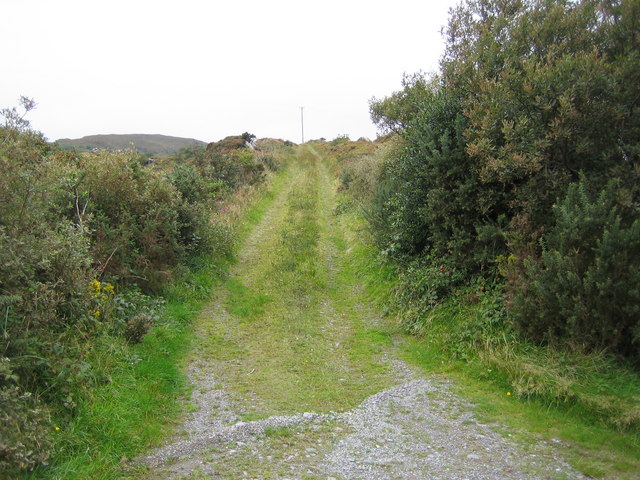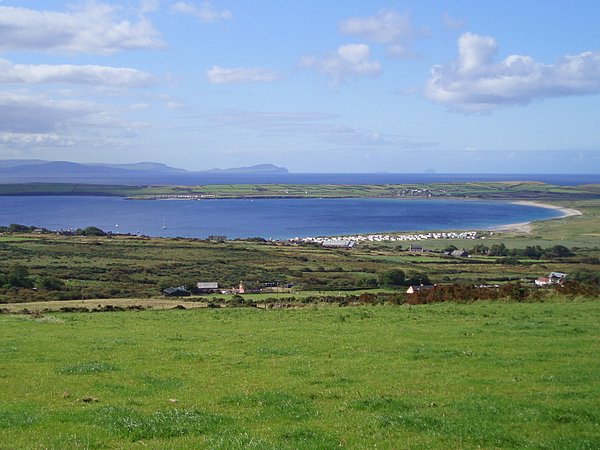|
Dingle Way
The Dingle Way () is a long-distance trail around the Dingle Peninsula in County Kerry, Ireland. It is a long circular route that begins and ends in Tralee and is typically completed in eight days. It is designated as a National Waymarked Trail by the National Trails Office of the Irish Sports Council and is managed by the Dingle Way Committee and Kerry County Council. Route The trail begins in Tralee, following the towpath of the Tralee Ship Canal to Blennerville, after which it follows the road for a while before climbing up to a mountain track along the northern flanks of the Slieve Mish Mountains. From here it descends towards Tralee Bay and the village of Camp. The next few stages – Camp to Annascaul, via Inch Strand; Annascaul to Dingle, via Lispole; and Dingle to Dunquin, via Ventry – mainly follow minor roads and boreens. The latter section of the stage between Dingle and Dunquin follows a cliff path around Slea Head. The section between Dunquin and Ballycurrane fo ... [...More Info...] [...Related Items...] OR: [Wikipedia] [Google] [Baidu] |
County Kerry
County Kerry ( gle, Contae Chiarraí) is a county in Ireland. It is located in the South-West Region and forms part of the province of Munster. It is named after the Ciarraige who lived in part of the present county. The population of the county was 155,258 at the 2022 census, A popular tourist destination, Kerry's geography is defined by the MacGillycuddy's Reeks mountains, the Dingle, Iveragh and Beara peninsulas, and the Blasket and Skellig islands. It is bordered by County Limerick to the north-east and Cork County to the south and south-east. Geography and subdivisions Kerry is the fifth-largest of Ireland's 32 traditional counties by area and the 16th-largest by population. It is the second-largest of Munster's six counties by area, and the fourth-largest by population. Uniquely, it is bordered by only two other counties: County Limerick to the east and County Cork to the south-east. The county town is Tralee although the Catholic diocesan seat is Killarney, whi ... [...More Info...] [...Related Items...] OR: [Wikipedia] [Google] [Baidu] |
Dingle
Dingle (Irish language, Irish: ''An Daingean'' or ''Daingean Uí Chúis'', meaning "fort of Ó Cúis") is a town in County Kerry, Republic of Ireland, Ireland. The only town on the Dingle Peninsula, it sits on the Atlantic Ocean, Atlantic coast, about southwest of Tralee and northwest of Killarney. Principal industries in the town are tourism, fishing and agriculture: Dingle Mart (livestock market) serves the surrounding countryside. In 2016 Dingle had a population of 2,050 with 13.7% of the population speaking Irish on a daily basis outside the education system. Dingle is situated in a ''Gaeltacht'' region. An adult Bottlenose dolphin named Fungie had been courting human contact in Dingle Bay since 1983 but disappeared in 2020. History A large number of Ogham stones were set up in an enclosure in the 4th and 5th centuries AD at Ballintaggart Ogham Stones, Ballintaggart. The town developed as a port following the Norman invasion of Ireland. By the thirteenth century, more g ... [...More Info...] [...Related Items...] OR: [Wikipedia] [Google] [Baidu] |
Long-distance Trails In The Republic Of Ireland
These are lists of long-distance trails in the Republic of Ireland, and include recognised and maintained walking trails, pilgrim trails, cycling greenways, boardwalk-mountain trails, and interconnected national and international trail systems. There are 43 National Waymarked Trails by the 'National Trails Office' of the Irish Sports Council. Each trail is waymarked with square black posts containing an image, in yellow, of a walking man and a directional arrow, a symbol reserved for use only by National Waymarked Trails. The oldest trail in the Republic of Ireland is the Wicklow Way, which was opened in 1980, and there are now over of waymarked trails in the Republic alone. The most frequented trails are the Wicklow, Sheep's Head, Kerry, Dingle, Beara, Burren and Western Ways. In 1997, the Heritage Council, started developing a series of walking routes based on medieval pilgrimage paths, and there are now of major penitential trails: Cnoc na dTobar, Cosán na Naomh, St ... [...More Info...] [...Related Items...] OR: [Wikipedia] [Google] [Baidu] |
Dunblane
Dunblane (, gd, Dùn Bhlàthain) is a small town in the council area of Stirling in central Scotland, and inside the historic boundaries of the county of Perthshire. It is a commuter town, with many residents making use of good transport links to much of the Central Belt, including Glasgow and Edinburgh. Dunblane is built on the banks of the Allan Water (or River Allan), a tributary of the River Forth. Dunblane Cathedral is its most prominent landmark. Dunblane had a population of 8,114 at the 2001 census, which grew to 8,811 at the 2011 census; both of these figures were computed according to the 2010 definition of the locality. In mid-2016 it was estimated that the population had grown to 9,410. Origin of name The most popular theory for the derivation of the name "Dunblane" is that it means "fort of Blane", commemorating Saint Blane (or Blán in Old Irish), an early Christian saint who lived probably in the late 6th century. His main seat was originally Kingarth on the ... [...More Info...] [...Related Items...] OR: [Wikipedia] [Google] [Baidu] |
Castlegregory
Castlegregory (, meaning "Griaire's Castle") is a village in County Kerry, Ireland. It is situated on the north side of the Dingle Peninsula, halfway between Tralee and Dingle. As of the 2016 Census, Castlegregory had a population of 250. Castlegregory was named after a castle built by Gregory Hoare in the 16th century. It is the principal village in Lettragh, the name given to the northern side of the Dingle Peninsula. Geography The village is located at the foot of a sandy peninsula called the Maharees separating Brandon Bay to the west from Tralee Bay on the east. Off the peninsula are a number of small islands, called the Seven Hoggs, or the Maharee Islands. A small fishing harbour is located at Fahamore on Scraggane Bay, about 5 km outside the village at the tip of the Maharees peninsula. The village is surrounded by the mountains of the Dingle peninsula and overlooked directly by Beenoskee and Stradbally Mountains. To the west is Mount Brandon. Castlegregory is ... [...More Info...] [...Related Items...] OR: [Wikipedia] [Google] [Baidu] |
Fahamore
Fahamore () is a townland and small hamlet/village on the Maharees peninsula in County Kerry. It consists of about 50 houses and one pub, Spillane's. Fahamore was historically much more populated than it is now as evidenced by two old schoolhouses in the village, one dating from 1849 and the other from 1911. Fahamore is located on the shore of Brandon Bay and is a centre for diving, surfing, windsurfing and sea bass fishing. It is also a centre for currach building, and currachs are still used locally, including at the local fishing harbour at Scraggane. History There is evidence of prehistoric settlement at the cliff face at Fahamore in the form of shell middens. A survey of the middens can be found in the book "Archaeological Survey of the Dingle Peninsula". Local oral histories tell of a night in 1839, known as the Night of the Big Wind, when there was a particularly bad storm. A three masted sailing ship, the ''Charger'', carrying a cargo of deal, was wrecked in Carral ... [...More Info...] [...Related Items...] OR: [Wikipedia] [Google] [Baidu] |
Cloghane
An Clochán (anglicized as Cloghane; from ''clochán'', a local type of dry-stone hut) is a village and townland on the Dingle Peninsula of County Kerry, Ireland, at the foot of Mount Brandon. In 1974 the village was added to the Corca Dhuibhne Gaeltacht (Irish-speaking region). It has a population of 297 (2011 Census). Cloghane and Brandon (''An Clochán agus Cé Bhréanainn'') are jointly twinned with the village of Plozévet in Brittany (France). The village is set at the foot of Mount Brandon, on the north of the Dingle Peninsula and overlooking Brandon Bay. The village is on the Wild Atlantic Way tourism trail. An Clochán was the subject of a controversial and influential anthropological study by Nancy Scheper Hughes in the early 1970s, published as "Saints, Scholars and Schizophrenics: Mental Illness in Rural Ireland". History According to ''A Topographical Dictionary of Ireland Samuel Lewis (c. 1782 – 1865) was the editor and publisher of topographical dicti ... [...More Info...] [...Related Items...] OR: [Wikipedia] [Google] [Baidu] |
Brandon, County Kerry
Cé Bhréannain or Bréanainn (anglicized as Brandon) is a Gaeltacht village on the northern coast of the Dingle Peninsula in County Kerry, Ireland. It lies directly north of Dingle, at the foot of Mount Brandon and on the shores of Brandon Bay. The ancient Celtic harvest festival, a pre-Christian celebration called '' Féile Lughnasa'', takes place yearly in the village and surrounding area on the last Sunday of July. Windsurfing Brandon Carter Bay is one of the top windsurfing locations in Ireland. Host of three PWA professional wave sailing events in 2000, 2001 and 2002, it is home to several windsurfing schools catering to all levels from beginner to advanced. The Maharees, a sandy peninsula between Brandon Bay and Tralee Bay, is where most windsurfing activity is based. Great locations include Sandy Bay for beginners, Scraggane Bay for intermediates on flat water and Brandon Bay itself for advanced wave sailing. Surfing is also growing quickly in the Maharees, with w ... [...More Info...] [...Related Items...] OR: [Wikipedia] [Google] [Baidu] |
Slea Head
Slea Head (Irish: ''Ceann Sléibhe'') is a promontory in the westernmost part of the Dingle Peninsula, located in the barony of Corca Dhuibhne in southwest County Kerry, Ireland. It belongs to the province of Munster and the county of Kerry and is served by the R559 road; the nearest villages are Ballyickeen and Coumeenoole. The headland itself, together with the larger part of Mount Eagle's southern slopes is formed from steeply dipping beds of the pebbly sandstones and conglomerates of the Slea Head Formation, dating from the Devonian period and traditionally referred to as the Old Red Sandstone. Just to the northwest of Slea Head is Dunmore Head, the westernmost point of Ireland. Slea Head is a well known and recognised landmark and also a very scenic viewpoint, with a dramatic view of the Blasket Islands. On 11 March 1982, the Spanish container ship, Ranga, was wrecked at Dunmore Head, close to Slea Head after losing power in a storm. The Slea Head Drive The S ... [...More Info...] [...Related Items...] OR: [Wikipedia] [Google] [Baidu] |
Boreen
A boreen or bohereen ( ; ga, bóithrín , meaning 'a little road') is a country lane, or narrow, frequently unpaved, rural road in Ireland. "Boreen" also appears sometimes in names of minor urban roads such as Saint Mobhi Bóithrín ( ga, Bóithrín Mobhí, link=no), commonly known as Mobhi Boreen in Glasnevin, Dublin. To be considered a boreen the road or path should not be wide enough for two cars to pass and have grass growing in the middle. The word "boreen" comes from the Irish word ''bóithrín'', which in turn comes from ''bóthar''. In origin, a ''bóthar'' was a cow path, a track the width of two cows, so ''bóithrín'' meant a little cow path. Bóthar was one of the five types of road identified in medieval Irish legal texts, the others being ''slige'' (on which two chariots could pass), ''rót'' (on which one chariot and two riders could pass), ''lámraite'' (a road connecting two major roads) and ''tógraite'' (a road leading to a forest or a river). In parts of U ... [...More Info...] [...Related Items...] OR: [Wikipedia] [Google] [Baidu] |
Ventry
Ventry (), officially ''Ceann Trá'', Placenames Database of Ireland. is a Gaeltacht village in County Kerry, Republic of Ireland, Ireland, on the Dingle Peninsula, 7 kilometres west of Dingle. Due to its long sandy beach, Ventry is a popular tourism, tourist destination. The town is connected to Dingle via the R559 road (Ireland), R559 regional road. Six kilometres west of Ventry are the ruins of Dunbeg Fort, Dunbeg (''An Dún Beag''), an Iron Age promontory fort on the edge of a steep cliff. Near Dunbeg is Kilvickadownig, home to other archeological ruins, including examples of the beehive house and the grave of Caol or Cháil Mic Crimthainn, the last to die in the Battle of Ventry from the well-known Fenian Cycle myths. A site of interest in Ventry parish is Rahinnane Castle, which was the residence of the Knight of Kerry. The Knight of ... [...More Info...] [...Related Items...] OR: [Wikipedia] [Google] [Baidu] |
Dunquin
Dunquin ( ) is a Gaeltacht village in west County Kerry, Ireland. Dunquin lies at the most westerly tip of the Dingle Peninsula, overlooking the Blasket Islands. At 10°27'16"W, it is the most westerly settlement of Ireland and of Eurasia, excluding Iceland. Nearby Dunmore Head is the most westerly point of mainland Ireland. The town is linked to Dingle via the R559 regional road. In summer a ferry connects the village with the main island of the Blasket Islands. There is dramatic cliff scenery, with a view of the Blasket Islands, where Peig Sayers lived. A museum in the village tells the story of the Blaskets and the lives of the people who lived there including the well-known writers of the island, which includes Sayers, Tomás Ó Criomhthain, and Muiris Ó Súilleabháin. In 1588, when the Spanish Armada returned via Ireland many ships sought shelter in the Blasket Sound — the area between Dún Chaoin and the Islands — and some were wrecked there. A memorial st ... [...More Info...] [...Related Items...] OR: [Wikipedia] [Google] [Baidu] |
_2.jpg)
.jpg)

.jpg)


